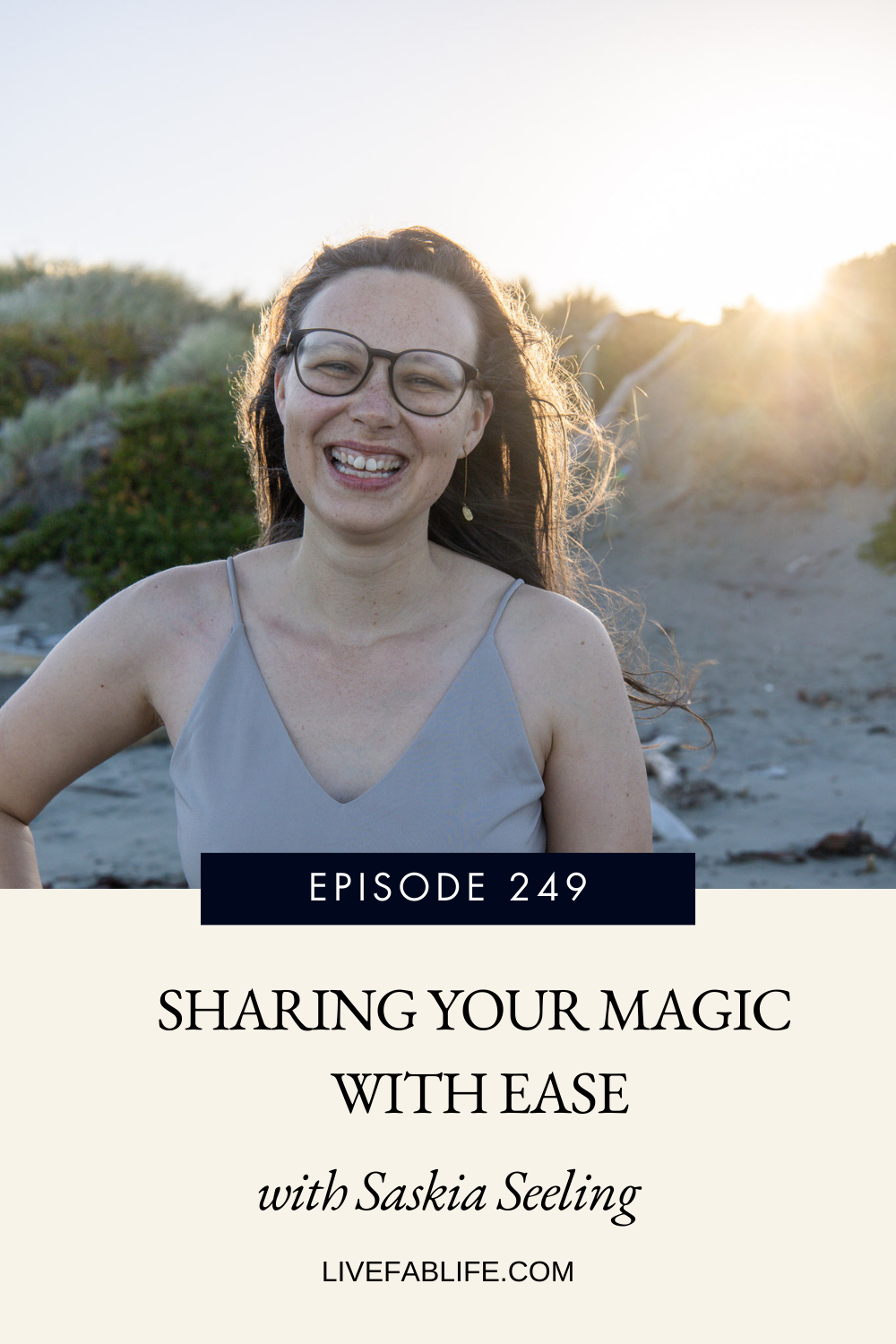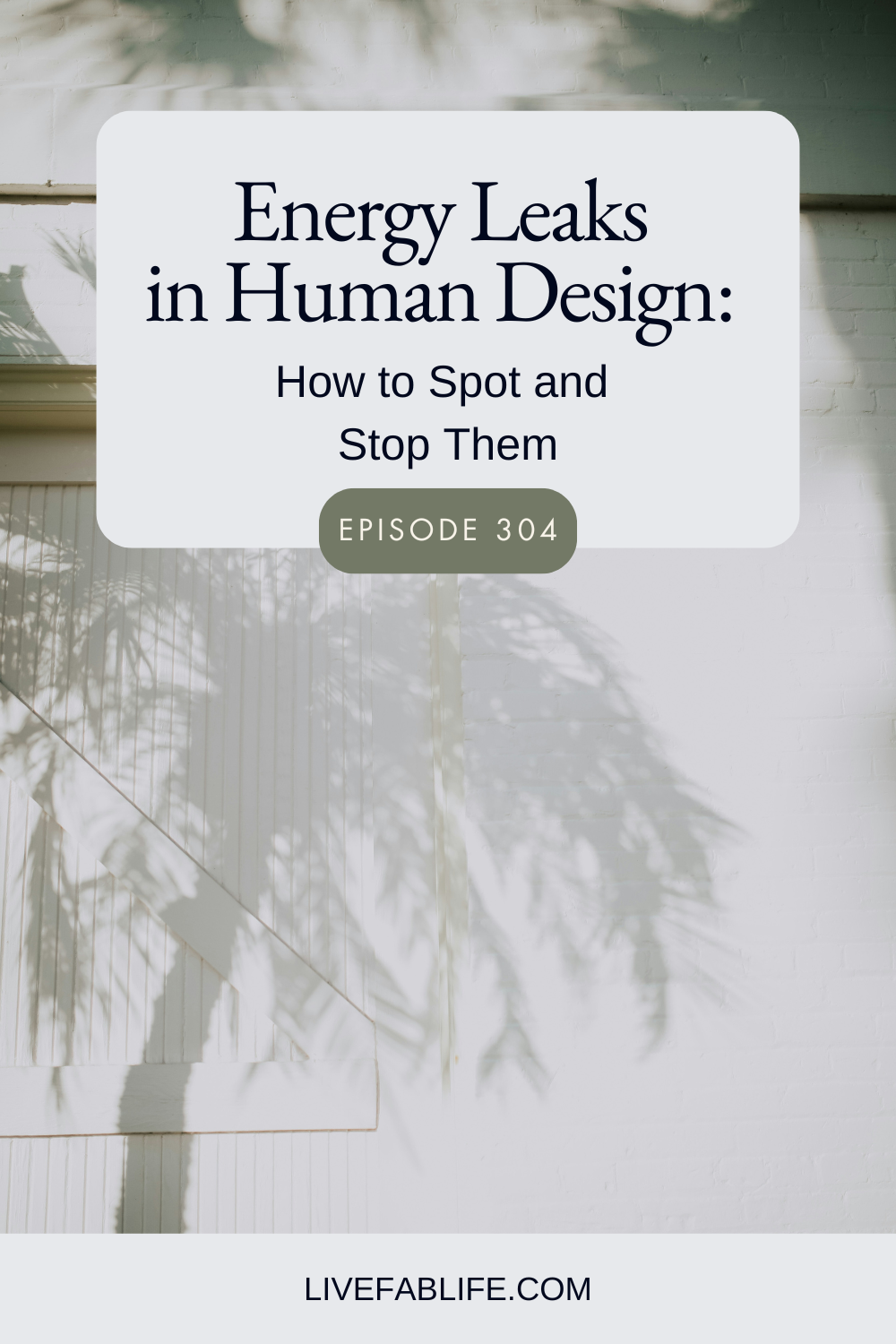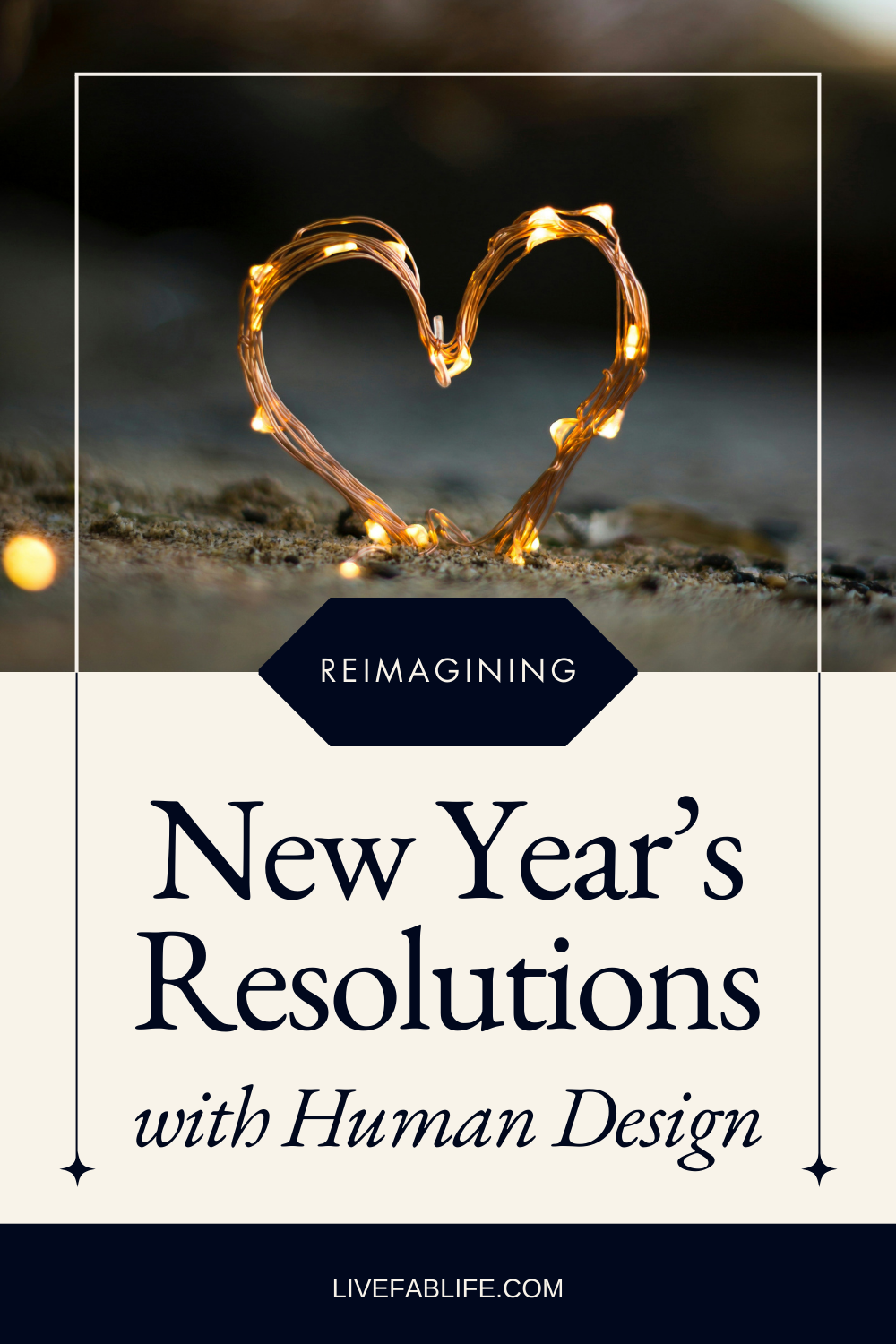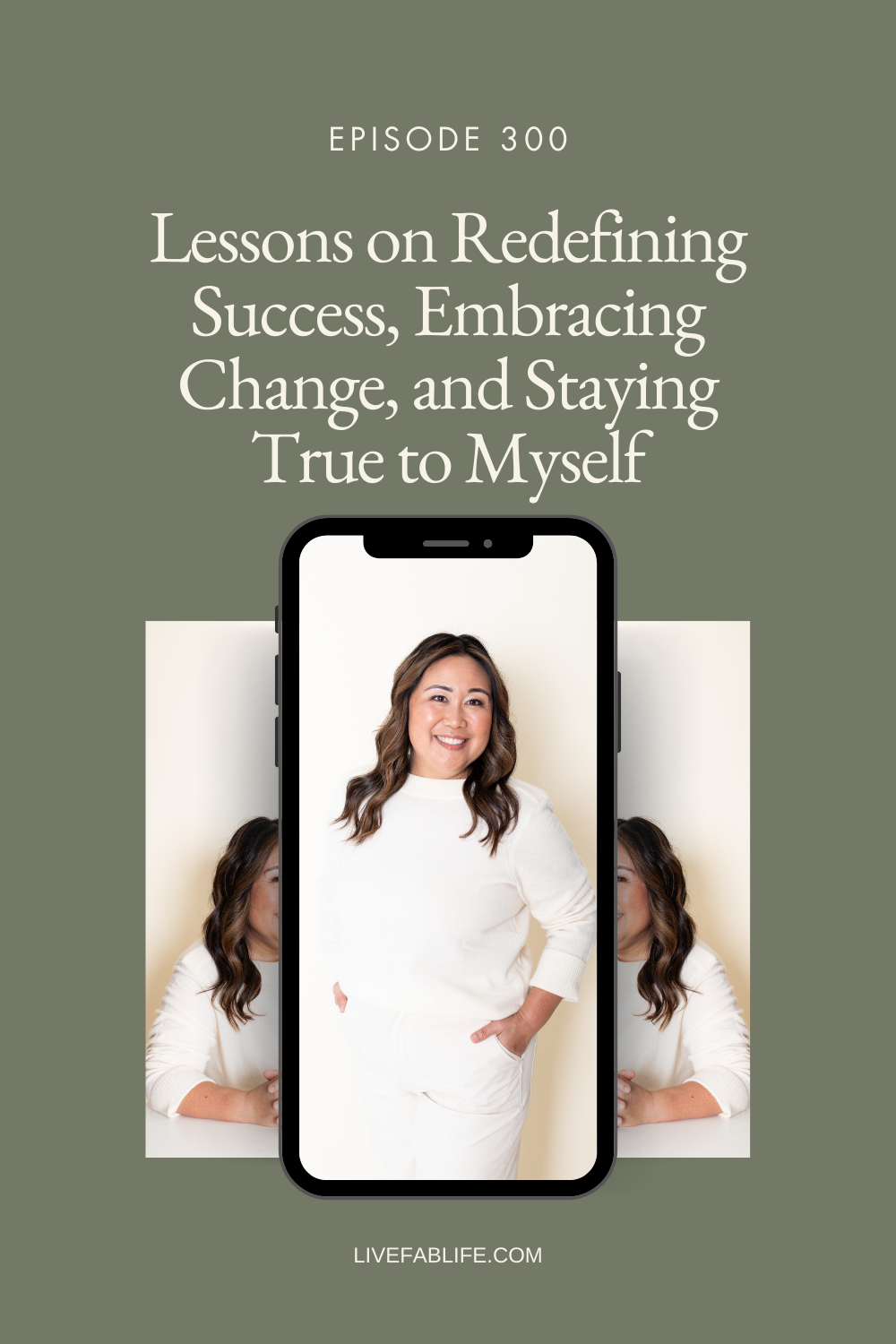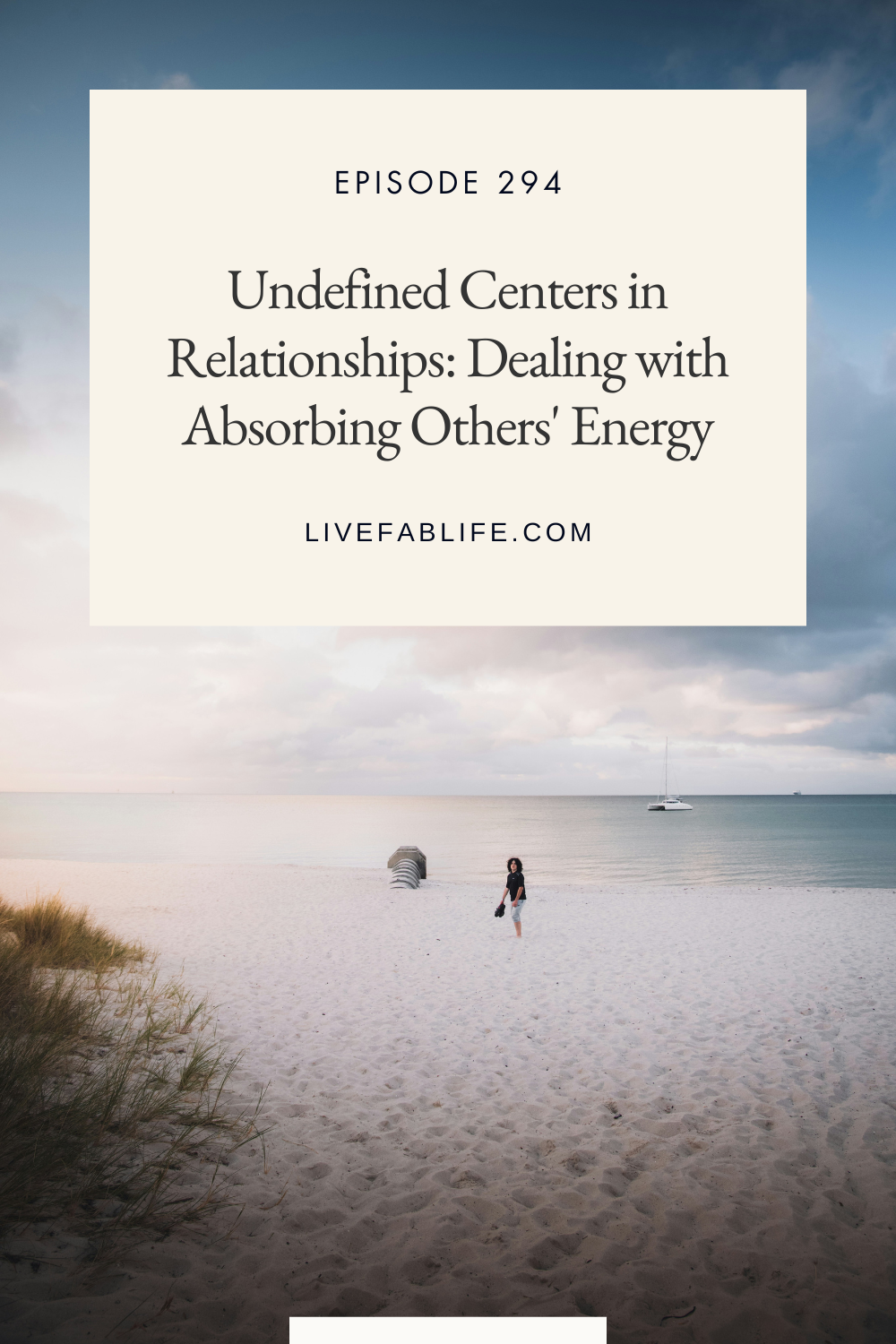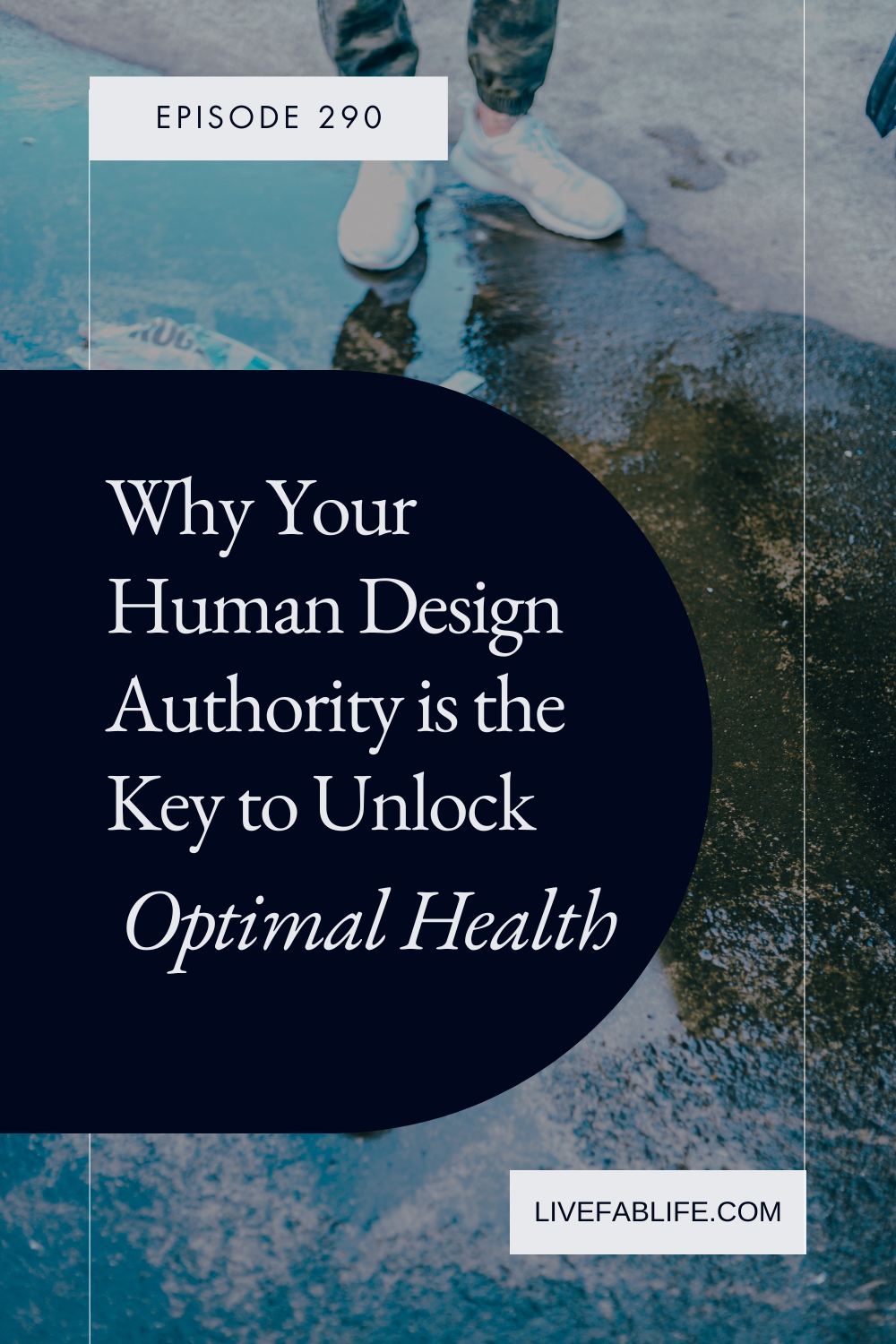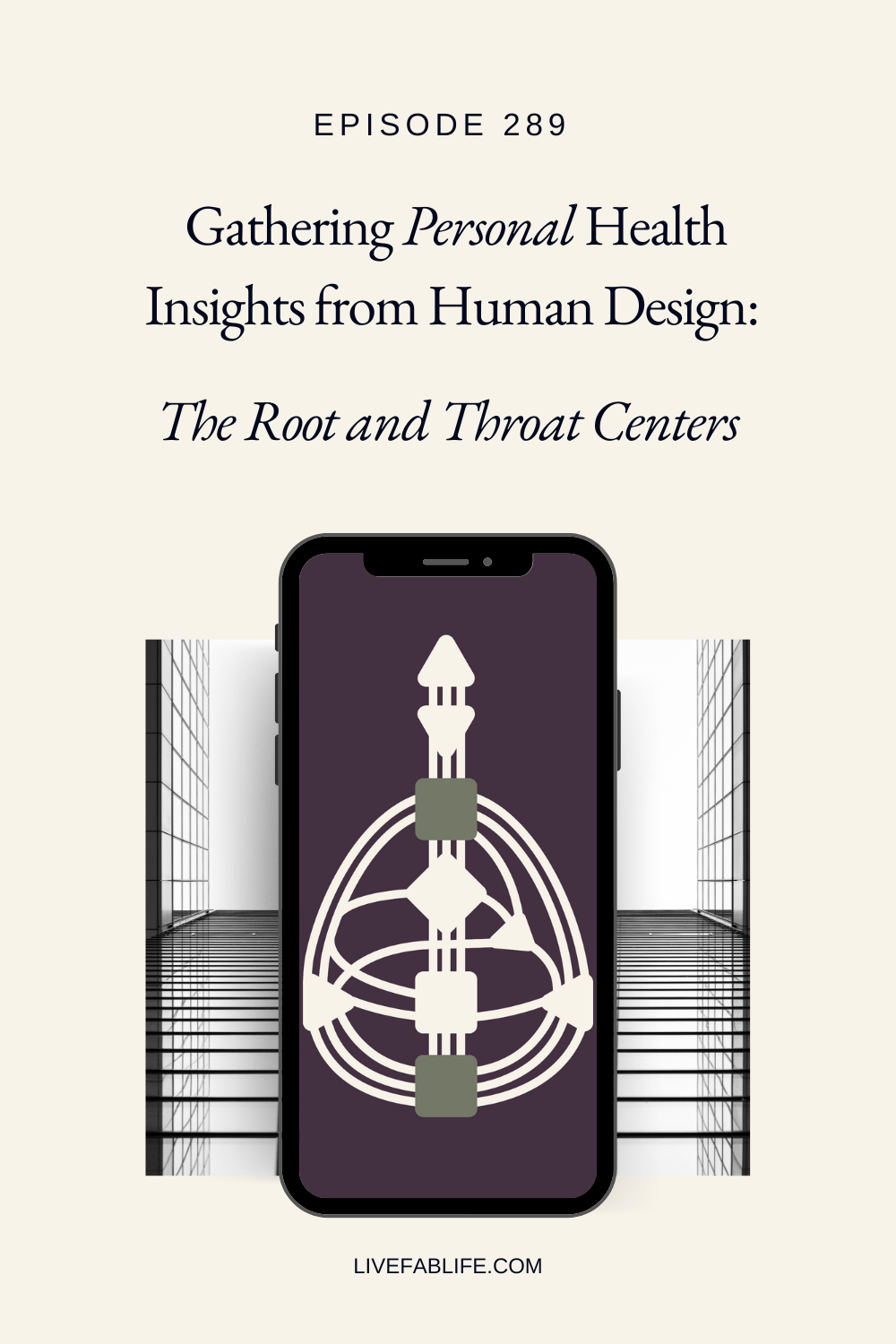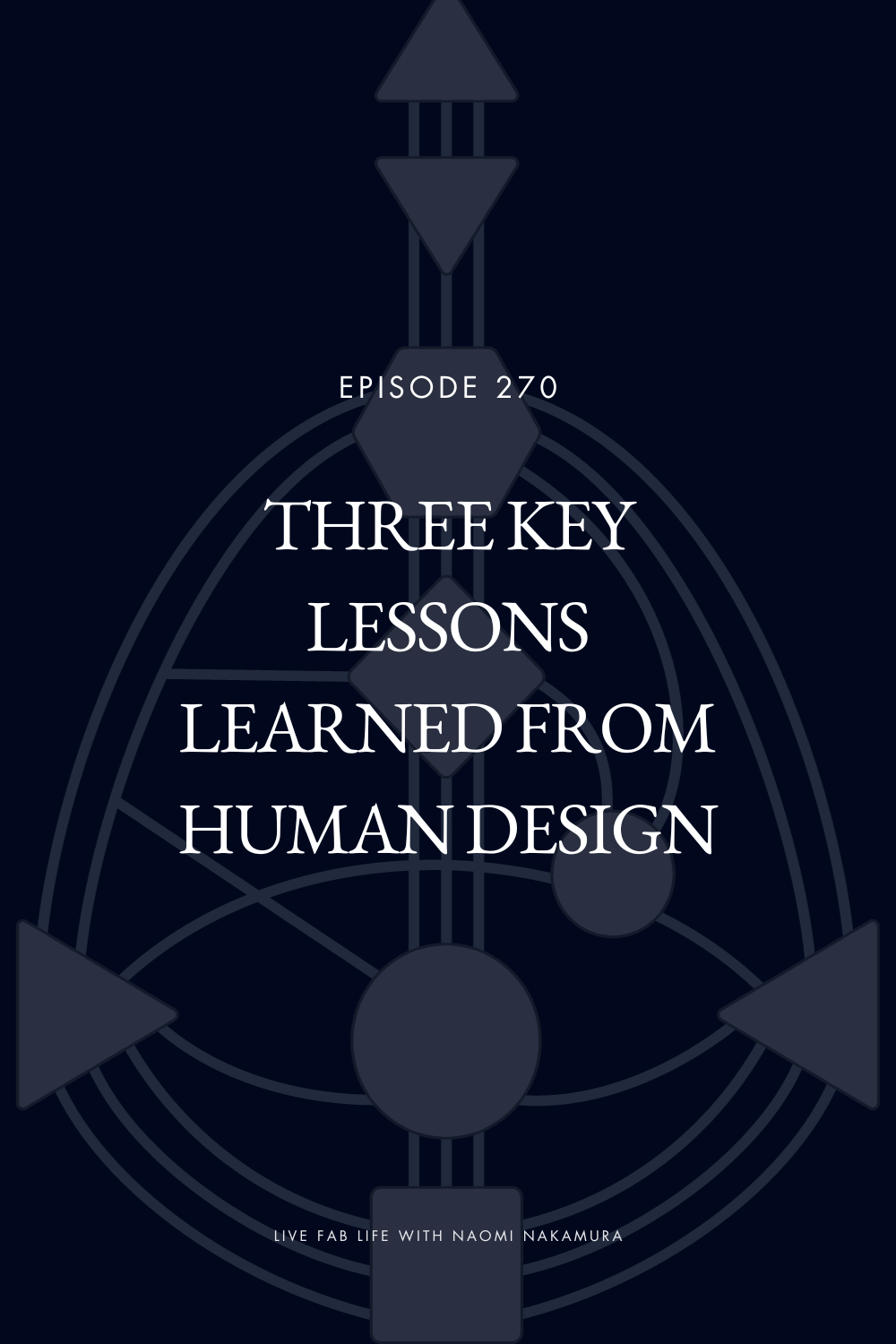Episode 249: Sharing Your Magic with Ease with Saskia Seeling
In this episode, I’m joined by Saskia Seeling, a soul business consultant and yoga + meditation teacher for new and aspiring solopreneur, helping them create a business where they can easily share their magic.
You’ll hear Saskia share:
How she was introduced to Human Design and how she incorporates it into her business and client work
How her Self-Projected Authority led her journey from a career in Finance to her soul business and her world travels from Aotearoa to Germany, where she’s now based.
How she alchemizes yoga and meditation with business to provide a niched service
How she works with the 3/5 Profile Lines
How she uses breathwork and meditation techniques as a grounding business strategy
How to write and work with affirmations
Listen to the Episode:
“If you follow your Strategy, you follow your design, that’s such a testament of how Human Design works. I can think about these things as holding myself back, but then it’s just, well, I just need to approach things differently than how you would.”
Read the Transcript:
Naomi Nakamura: Hello there, my friends. Welcome back to The Live Fab Life Podcast. I'm your host, Naomi Nakamura, and I’m so thrilled today to be joined by Saskia Seeling.
Saskia is a yoga and meditation teacher, and she is also a business consultant who supports new and aspiring solopreneurs and setting up their soul businesses and sharing their magic with ease. You’ll hear Saskia and I discuss:
- What’s a soul business
- How Human Design came into her life and how she incorporates Human Design into her business and client work.
- Her journey from Finance to being a yoga and meditation teacher to organically alchemizing the two and establishing her soul business as a business consultant
- How her Self-Projected Authority led her life direction world travels from Aotearoa to where she’s now based in Germany
- How her 3/5 Profile Lines show up in her life
- How she supports her business with the breathing, meditation, and yoga techniques
Saskia is also a fellow Service Design School student I know you've heard me talk about Service Design School before.
It was awesome to connect with her and I so enjoyed our conversation together, and I hope that you do too. So, with that, let's get to the show.
Hello, Saskia. Welcome to the show.
Saskia Seeling: Thanks for having me. So excited to be here.
Naomi Nakamura: I am excited to have you too. We did Service Design School together. It's nice to see you again.
Saskia Seeling: Yeah, totally. Yeah, the course changed a lot for me and my business. And I'm really excited to meet you here.
Naomi Nakamura: For those who don't know, you tell us who you are. And what it is that you do.
Saskia Seeling: Yeah, my name is Saskia Seeling. I'm German and I’m a yoga meditation teacher kind of on one side of my business. And then a soul this consultant on the other side of my business, which is where I support people like yoga and meditation teachers, but also coaches, Reiki practitioners, all kinds of people to you know, set up their business and get started in that direction of, you know, the hard calling them.
Naomi Nakamura: Well, that's needed. Speaking of someone who does that work, you know, we get so excited about doing the work, but no one ever teaches you how to start the business and how to run the business. So how did you come to do this work? Because well, first, how did you come to do both sides of what you do?
Saskia Seeling: Yeah, so basically, I went to university, you know, like lots of other people studied Finance, and then went back to like banking supervision. And like all throughout uni, and working, I kind of knew that that wasn't my path.
But I also didn't really have a different idea or like a different calling. And then I went to travel the world for quite some time. And there I, you know, just had this thought one day, why don't I do like yoga teacher training, because I've been practicing yoga at that stage for quite some time. And yeah, just followed that call. And from there, it kind of unraveled, itself.
So, I came back from yoga teacher training, and got my first yoga job, and then quite quickly started to host like workshops, retreats, all the good stuff, started working with people like one on one. And then the more I did that, the more people reached out to me who are also in that area, like yoga teachers, and asked me like, “Well, how did you do your branding? Or how did you create like this event setting? like asking me all these questions, and I'm always happy to help. But that was a sign that there was something missing, obviously, in the market.
And yeah, just like a year ago, I took the time with Service Design School, to get started on that part of the business and to create something that really fills a gap for people who, you know, have these beautiful qualifications, these beautiful callings, that aren't really familiar with, like the business side of things with, like, everything that needs to be set up and needs to be done. Yeah. So, kind of organically it all through together.
Naomi Nakamura: That's the best when things just come together. You know, it's interesting, because obviously, I have a business background too. And I feel like a lot of people who get into this space like you and I, we've done careers, and then there's something missing, and we want to go into this other place.
I don't think we take the time enough to appreciate the experience that we bring into doing something like this because, you know, for people who just get started doing coaching without the business experience is hard. And at the same time, I see a lot of entrepreneurs who, I really don't want to use the word criticize, but they criticize the 9-5 job, but there's a lot of good experience to draw from that really crosses over.
Saskia Seeling: Totally. Yeah, I agree. Like, I didn't even realize in the beginning how much I was drawing from these experiences. And just like, you know, all this stuff that you do kind of naturally once you started doing them in some sort of setting, it was only just when people approached me and asked me how I was doing that and share that it wasn't as easy for them that I realized that there's a huge advantage to that.
Naomi Nakamura: Yeah, yeah. It's, it's something we just take advantage of. So, I noticed that you work with a lot with soul businesspeople. What is a soul business?
Saskia Seeling: Yeah, so that's the description I came up with, because it was hard to kind of put into words, this kind of feeling that I was having. For me, this soul-preneur is someone who has a gift or some sort of magic to share with the world that they're passionate about.
They're starting their business, not from maybe like this kind of calculative perspective, like no judgment, they're just distinguishing factor. People who have something that they're really passionate about, and we're kind of the business side to it is maybe more in the background than for people who set out to start a business and then are looking for what kind of business could I do?
Naomi Nakamura: The reason I asked that, because it's not just people who are yoga teachers, or who teach meditation, it's people who are just really on a soul level feel just connected to the work that they do.
Saskia Seeling: Yeah, exactly like this calling that there's something that you kind of need to share with the world in a way. Like it's not even a choice in some ways. So yeah.
Naomi Nakamura: I'm so curious because you have an interesting Human Design. But before we get into that, how did Human Design come into your life?
Saskia Seeling: Human Design came into my life when I was living in New Zealand. I still remember it like super vividly. I just came back from my big summer holiday, and I was meeting up with a friend. We were going for like a walk by the ocean. We're just catching up and she was like, “Well, I found this tool, you really must try it. It's like, so interesting, and so accurate.” She's also a Projector. And then I checked it out and it's been really, helpful. And, yeah, in the beginning, it was just a lot of like curiosity. But the more I dove in, I mean, you probably have a similar experience.
Naomi Nakamura: Funny enough, my experience also came from meeting up with a friend and going on a walk, and the, saying, “Hey, so I had this reading with this person about this thing called Human Design.” And she's like, “I think you should get a reading too.” And then as you know, as I did it, I was like, Wait a minute. I think I heard about this a couple of years ago, because a few of my friends had readings, but I didn't know what it was. And I'm like, you know, just kind of like, “Oh, nice, good for you.” But like, totally, no idea. And then you look up your design, and you're like, “I didn't even know what any of this means.”
Saskia Seeling: Yeah, I agree. Like, I looked it up and passed, like, it doesn't say anything. But it was around that time when like the first Instagram account started to grow. And so that was definitely helpful for me in the beginning to just get like a feeling of what all the things were about.
Naomi Nakamura: So, what is your design?
Saskia Seeling: Yes, I'm a 3/5 Human Design Projector. And I'm self-projected.
Naomi Nakamura: We've talked a lot about Projectors on this show and I love meeting other Projectors, because I'm just so curious how things show up for you. But I'm curious about your 3/5 profile.
So, I'm a 3-profile line as well; we learn from our life experiences. But what is that like combined?
Well, first, tell us about your 5 line and then what that's like being having the 3/5 profile.
Saskia Seeling: Yeah, it's something I'm still struggling with at times because the 3-line I very much identify with even across the years in my business. I've tried so many things, started so many things, and then kind of abandoned them or like they didn't work or whatever. And so that part's really like comfortable in a way to me, but the 5th line, it's so challenging.
I'm definitely still learning that because I think what also comes with the 3-line like you're trying all these different things, and then all these different people see you for like the expertise or whatever you brought to that three-line situation. But then you kind of want to move on because it felt like a failure, or it felt like you had to move on.
Naomi Nakamura: We've talked a lot about Projectors on this show and I love meeting other Projectors. With the 3-line it’s like, you got what you needed out of it and now it's time to try something new.
Saskia Seeling: Exactly, yeah.
Naomi Nakamura: But there's still all these people who like to see the expertise of the 5th line? When I think of the 5th line, I think of natural leadership that perhaps the 5th line doesn't even recognize. You’re looked to as a leader, but some part of the 5th line also knowing when to draw back because you've served your purpose. It's time to draw back and retreat until the next thing comes.
Saskia Seeling: Yeah, it definitely has been a journey for me because I think in the past, especially when I started my business, I've really enjoyed from people, you know, saw me as an expert, or like a leader in some capacity, and I didn't have the self-awareness, I guess, to say like, Well, yes. But also, you know, I'm moving on and growing whatever. Um, so I think I allowed myself too easily to be directed by what other people see in me, rather than what came through myself in a way.
So that's definitely been a challenge for me with the 5th line.
Naomi Nakamura: Yeah, I can see that, especially with being a Projector, right? We have so much openness in our design.
But I'm also curious because you have a Self-Projected Authority, which means that you have a defined G-center and the G-center is about direction, identity, and knowing who you are and what direction you're taking. And as someone who doesn’t have that center defined, I'm always curious like, “Oh, should I do this? Should I do this? What should I do?” You know what I mean? It's always that questioning going along with my undefined head.
Saskia Seeling: Yeah, for me, there was a lot of deconditioning that had to happen throughout the journey., I think if you asked me four years ago, I probably wouldn't have identified a lot with the G-center, because I would have just said the same thing that you just said. For me, there was a lot of conditional I learned along the way from the way I was raised, the experiences I had as a child and young adult. There was a lot of work and quite the journey to get to that point where I do trust myself, and where I can let go of all the outside noise and just embody my natural design.
Naomi Nakamura: Well, you made a total career shift, going from the world of finance to the world of yoga, teaching and coaching others, like that's a significant shift.
Saskia Seeling: Yeah, totally. I think that journey was such a huge experience in that transition because when I finished school, I didn't really know what to do with my life. My parents recommended to go to uni and study Finance, and I was like, well, okay, maybe, there was alway this creative and sensitive part to myself. But I didn't trust myself in that part.
And so then even like going to university, realizing that wasn't my path, and then doing the job. Also, realizing that it wasn't a path for me, I still didn't really trust where I wanted to go. I had some ideas, but I always kind of dismissed them because I said, “Well, I can't make money with that, or you can't do this and that.” So, that was definitely a journey of growing into my natural design.
Naomi Nakamura: What was that journey like? How did it start? And I guess, what were the things that started to help you learn how to trust yourself and trust your process?
Saskia Seeling: Yeah, for me, definitely meditation has been a huge part of quieting the outer layers of the mind and having a more natural access to the intuition of the G-center, and that's been a big, big part.
And then I would say the other big part for me was traveling and getting myself out of the surrounding the environment. I was feeling maybe a little bit caught up in and conditioned in certain ways. Traveling for an extended period of time, and having the opportunity to be surrounded by different people and vastly different life experiences has also been such an eye opener to you know whatever you feel called to do.
Naomi Nakamura: Well, I'm really curious about when you were planning your travels. Did your G-center play any role in knowing what direction to take? I mean, you talk about life direction, but there's also like, your actual literal direction of where to go.
Saskia Seeling: Yeah, I think so. I was doing that trip with my partner, and we were gone for 14 months.
Naomi Nakamura: Wow.
Saskia Seeling: I was doing all the planning because I really love that. You have the whole world to choose from and I think there's something beautiful to discover in pretty much every country in the world. But yeah, it was a journey of joy, trusting that I would make the right choices and having a plan beforehand, and then at the same time, trusting that it would unfold and that I would be able to follow the steps that present themselves to me. Yeah, so definitely a big experience in like, the literal sense of finding direction.
Naomi Nakamura: Yeah, as you share that I was thinking, having an undefined G-center, that's the fine balance for me between trusting the direction I'm supposed to go and planning that, but also like control and knowing when to let go of that control, and when to just let the process play out.
Saskia Seeling: So interesting, because I think, for me, that has always been easier, like directions in the literal sense. Planning trips, for example, and really embodying that self-trust and yeah that inner knowing, rather than in life, where it took a bit longer to learn,
Naomi Nakamura: Isn't that what Human Design is? It’s learning self-trust.
Saskia Seeling: Totally. Yeah, I agree. Like with every new piece that I try to embody, or just kind of explore, there's always this idea of, well, maybe it shows me more of who I am and usually it does.
Naomi Nakamura: It's something that sounds so simple - self-trust, but when you start to think about it, and then when you start to think about how much you trust yourself, then you start to get really into like some complex things, it really makes you start to think about things a little bit differently.
Saskia Seeling: Yeah, I agree. I don't know if you have that experience, but for me, it's also helpful. I've learned this piece about Human Design, maybe like being a Projector, and then reflecting on past life experiences, and maybe even, mistakes or things that at the time, I maybe should have done differently and seeing how I had embodied my Human Design at that stage, and would it have unfolded in such a different way.
Naomi Nakamura: Oh, totally.
So, a little bit of off topic, but I'm curious, where did your travels take you?
Saskia Seeling: Oh, literally around the world. We went to Australia and New Zealand, before we moved there, spent six months in South America, then a month in Vietnam, two months in India, and two months in South Africa.
Naomi Nakamura: Wow, that is quite the world tour. What was your favorite location?
Saskia Seeling: Everyone always asked and it's so difficult to answer, but I would say in terms of nature, definitely Patagonia in the very far south of South America. In terms of experience, India, because it's just very different to where I grew up.
Naomi Nakamura: I'm curious, what's your Human Design Environment?
Saskia Seeling: Kitchens.
Naomi Nakamura: Oh, interesting.
Saskia Seeling: Yeah, it’s definitely something I'm still working out for myself - Projector and Kitchens. I haven't fully figured that one out, to be honest because I think I do get the Kitchen environment and I do get the creative energy and I do really enjoy that. But then I also often feel really drained afterwards. So, I think there's like some sort of golden center point that I have yet to figure out.
Naomi Nakamura: Well, that's all about alchemy, right? Creating things.
Saskia Seeling: Yeah, totally. I mean, that's also what I love about Human Design - there's really no endpoint to learning it.
Just a few weeks ago, I was listening to this podcast, and the woman was talking about Strategy and Waiting for the Invitation. Obviously, I consumed so much content over the years about this Strategy and still, just the way she phrased something just totally clicked a different way and opened me up to a new perspective about it. So yeah, that's the best thing I think about it, totally.
Naomi Nakamura: I love to hear people talk about things just to hear what you said - how they talk about it and how they phrase it. I might hear someone talk about the same topic eight different ways and we'll get eight different things out of it, even though it's also something that I talked about as well.
Saskia Seeling: Yeah. And it's so strange. Then when you reflect on it, you probably couldn't even say, what was different, or it just lands differently.
Naomi Nakamura: Exactly. So how do you bring Human Design into the work that you do with your clients?
Saskia Seeling: Yeah, so basically, I don't use it for my yoga and meditation clients, but I do use it for my soul business clients. When I went through Service Design School, it was pretty early on and obvious to me that I needed to get people's Human Design to create this consulting that’s more specific for them and can help them in the best possible way.
Naomi Nakamura: Now that we know about Human Design, it's almost like, “How did I do anything in life before knowing this?!”
Saskia Seeling: Totally
Naomi Nakamura: Yeah, especially in consulting and coaching. I would say they are true for a group of people, maybe for Projectors, or maybe for Generators, that there's rarely a type of advice that goes for everyone to really get into the nuance for each person to really get individualized for each person.
Saskia Seeling: Yeah, exactly. That was the first part to it. So, I like started to create these documents just for myself to kind of get an idea of where people are at, what their design was saying, and then when I shared it with them, they weren't interested. Not everyone who uses my services is familiar with Human Design and so it always rings true with people and yeah, they were really interested in it. And so, from then on, I started sharing the document with them. Now, when someone books an intro session with me, they always get this business-centered Human Design document that shows them little bits and pieces of their design that they can use in their business.
Naomi Nakamura: What parts of the design do you find most helpful to clue in on, especially with working within your own business because there's so many parts of Human Design?
Saskia Seeling: I know. Yeah, it's definitely a challenge, not to lose myself. The two details, but I mean, definitely Strategy - I think that's huge because we're often conditioned to go one certain way but there are obviously different ways to do so.
And empowering people to just follow their gut or whatever they have - that's really important.
And then, of course, Type because business for Projectors, generally looks vastly different from a business for a Generator.
And then we do look at the Profile Lines. That's probably not for everyone, but I do give them that information and if it lands with them, we do work with it. But for some people that’s something that's a little more down the line.
Those are the main parts we dip into little bits and pieces of.
Naomi Nakamura: I always find, for me, I always look at centers to see how does the energy flow here.
Saskia Seeling: Totally.
Naomi Nakamura: And I think it's so interesting how that resonates with people.
Saskia Seeling: Yeah, and again, just reflecting on my own journey, as well.
It's so interesting because I have no motor centers defined. And I was always wondering, like, why am I so weak? Why just can't keep up with everyone else? And just, you know, getting their permission slip. And especially in business, yes, get the permission to rest and to not be busy.
Naomi Nakamura: Yeah, I don't have any motor centers either. I also have the 48-16 channel, which is like all about self-doubt and then the undefined head, which is again, all about overwhelm and questioning yourself. It’s a miracle that I'm able to get anything done.
Saskia Seeling: Yeah, but see, that's the magic really, is that you still get stuff done. If you follow your strategy, you follow your design, that's such a testament of how Human Design works. I can think about these things as holding myself back, but then it's just well, I just need to approach things differently than how you would.
Naomi Nakamura: Yeah, totally.
Saskia Seeling: And I think for me, also, that was why a classic full-time job didn't work especially considering the motor centers, because I’m always like quite fast when I do things, but then I also need to rest for quite some time. A traditional job where you have to clock in 40 hours, that's just not going to work because that's not how we're designed.
Naomi Nakamura: I still have a traditional job but I gotta tell you, in 10 years, I don't remember the last time I worked a 40-hour week, but I’m still here because it's so flexible that it really does support my design. I'm the exception - really fortunate that way.
Saskia Seeling: I think that's good that more and more companies are embracing, new concepts of new working cultures.
Naomi Nakamura: Yeah
Saskia Seeling: I think that's really helpful to everyone, because not everyone is having like endless energy. And we still like giving that output and we still give really valuable stuff that corporate needs as well, like not every predictor, for example, can be like self-employed or probably doesn't want to be self-employed. And the more flexible like work environments become, the better we can share our gifts as well.
Naomi Nakamura: Yeah, I definitely feel like there's a shift happening in society where if organizations don't start to change as well, that they're not going to have the same ability to attract talent, because there's going to be too many other options which I think we're seeing now.
Saskia Seeling: Yeah, I agree. I actually just started like a two-day office job, a week or so ago and that's been my experience too. It's such a different work experience compared to the job I had before. The country is quite different and they're attracting so much like high caliber talent. So, I hope this is going to be a more broad scale experience for many companies.
Naomi Nakamura: Yeah. Just a couple of questions before we close…
What role does meditation and yoga play in your own practice and in your own business?
Saskia Seeling: So, in my personal practice, meditation plays probably the biggest part. I meditate every day.
Naomi Nakamura: Do you do guided meditations? Or silent ones? I've been meditating for a long time, but it's not something I do consistently so, I'm always curious about how people do it. There's some meditations that are 30 minutes long, and some are three minutes. What does your practice look like?
Saskia Seeling: That's also what I do with meditation clients. We basically work on having a self-sustained practice, so no guidance, or whatever. It’s just guiding yourself really through a meditation, which sounds weird in the beginning, but I find it more impactful, to be honest.
There are days when I do longer meditations, but my usual thing I would say, is about five minutes of calming breathwork because I need to calm my nervous system to give my mind a better chance to settle as well.
Then once I've done that, most often do a very simple meditation, just focusing on like the space below the nostrils. Maybe someone listening or maybe you've done Vipassana, so it's kind of like what they teach during the past. I do that for about 10 minutes and then I finish with a minute of affirmations. It's a really potent field. When you come back from meditation, there's a certain inner space that's usually not open and so dropping affirmations into that space is really powerful. So yeah, that's my usual practice.
Naomi Nakamura: Tell me about breathwork because I have practiced it in the past, but it's not something that's part of my daily rituals. And then when it comes to affirmations. My mind goes blank whenever I do an exercise to come up with an affirmation. I'm like, “Oh, no idea what to say.”
Saskia Seeling: Yeah, I definitely have a lot to share about affirmations.
But let me start with a breathwork. Nowadays, there's so many types of breathwork out there, but because I do have a yoga background, I use traditional pranayama techniques. So that's work with the breath where you emphasize different parts of the breath.
For example, a calming technique that I use quite often, would be to inhale for four counts, and then to exhale for six counts and hold the breath out for four counts, shaping the breath in different ways.
Through counting the breath, I find personally, the easiest way is the way to go if you want to do that at home; maybe you're not used to it, but it's fairly simple, I promise because the exhale and the exhale retention tends to have a really calming effect on the nervous system.
So, if you want to have that effect, focus on the retention. And if you want more of a pick-me-up, more of an energetic rotation, focus on the inhale and the inhale retention to simplify it.
Naomi Nakamura: The reason I ask is because I guess I always took for granted that meditation and yoga and breathing were kind of all the same thing. It was during the early part of the pandemic, I struggled with sleep for years, and my integrative doctor asked me if I had ever tried breathing.
I was like, I breathe every day, but she was the one that recommended I look into trying pranayama breathing, specifically to calm my nervous system, and especially before bed as a technique to help with sleep.
That's when I realized that meditation is one thing, breathing is another thing, and yoga is another thing. They're three separate things, but because they're often practice together, that I guess in my head, and I'm sure many other people have done this as well, it just kind of lumped them as one but they're actually three separate modalities.
Saskia Seeling: Yeah, that's a whole different road to go down. The way we practice yoga in the West is a really washed down version and the kind of original yoga would be meditation. Pranayama and the movements is all more of a, I don't want to say modern, but more recent addition to yoga.
Naomi Nakamura: I've read Westerized.
Saskia Seeling: Yeah, I think especially the movement part definitely picked up a lot more when yoga was spread to the west.
Naomi Nakamura: Many episodes ago, I had an Ayurvedic doctor on and she alluded to the same thing.
Saskia Seeling: It's so interesting. The way I teach yoga, it's from a more traditional background, so, there's some intersection with Ayurveda as well, the same philosophies, I guess, that are drawn upon.
And especially with sleep, because you mentioned that. It's always so fascinating still, after all these years, the effects that it really does have, because it's such an ancient technique.
First, it was only transmitted from mouth to mouth, and then it was written down and we're still using the same systems. For example, systems surrounding the movement of energy. Like when you're focusing on the exhale, for example, you're focusing on a certain type of grounding energy. People already figured that out thousands of years ago.
Naomi Nakamura: And guess what it’s free!
Saskia Seeling: Yep, exactly. That's what I love teaching people - to learn how to meditate on themselves. Guided meditations are great. I do also consume them from time to time. But there's nothing better than knowing that you can rely on yourself and knowing you're in a situation where maybe you do need a meditation
Naomi Nakamura: And you can just start your business too, because they teach self-empowerment, and they teach self-trust.
Saskia Seeling: Exactly. Because we were asking about the business as well. Sorry, I'm going quite long.
Naomi Nakamura: No, you're fine. I love the conversation we're having.
Saskia Seeling: Okay. So, I use meditation, obviously, for my clients, but also for my business clients because I think, with my own experience as well, there's often a lot of conditioning happening around what business should look like, how we should act as business owners what we should do all the things, and it's so exhausting to have all this information available to you and then to consume it.
Naomi Nakamura: And then not only are you spending the energy consuming the information, then you sit there and you're like, Okay, but what should I do?
Saskia Seeling: Exactly. And so, really, it's about empowering yourself to listen to your inner intuition to listen to your strategy. And yeah, fine. Meditation is one of the most effective tools to do so.
Naomi Nakamura: Okay. Now, affirmations, affirmations.
Saskia Seeling: If you had asked me three years ago, if I was working with affirmations, in my own practice, I would have laughed out loud. I didn't connect with them at all. I'm sure we all know, having an affirmation and like repeating it, but it's just words really, yeah,
Naomi Nakamura: There's no connection to it.
Saskia Seeling: I think finding an affirmation, it is a bit of a journey. It has to be some sort of pain point as a word comes to mind - you're struggling with something that repeatedly shows up in your life. And then there's a bit of a like technique to it.
To find an affirmation that works for you, you want to shift it, obviously. Find the shortest sentence. Most of the recommendations will be to save that sentence in the present tense. I always see that with abundance stuff where you say, “I'm a millionaire,” when actually, your account is empty or something.
And so often, it's that kind of disparity between reality and what we're hoping for that's too much for the mind.
So, what I do is working with sentences, like “I'm becoming a millionaire”, or whatever you're going forward, and finding that sweet spot between where you're heading and where you are, and what is still believable, where your mind can get on board with. So, that's one part.
The second part is taking some time to let these affirmations resonate in your body. There's something that’s happening on the level of your mind or on the level of the word is probably not going to work out.
So, it might take some time to find phrasing, words that really land in your body. But once you do, you can keep that information until you feel that it's done. I find that the most powerful way to look at it and not just repeat some random words.
Naomi Nakamura: You're right. It's really landed at the soul level. I don't know if you've heard of The Five-Minute Journal. I have the app and part of it is what is your affirmation for the day.
And I'm literally, like, I have no idea. But on the app, they have suggestions you can choose. So, I choose one but honestly, there really isn’t that much of a soul level connection because it's a Five Minute Journal. I'm not spending a lot of time on it.
So, I'm gonna give your advice a try and see what lands
Saskia Seeling: Yes, try that out. And when you have big day coming up or something that's important, you can always change it up. But for me, it's definitely more of a medium to long term thing to find information.
Naomi Nakamura: I like that. I've never heard it shared that way, so thank you.
So, how can people connect with you?
Saskia Seeling: People can find me on Instagram, of course, then I can also find my website, www.saskiaseeling.com.
I'm always happy for people to like, reach out and message. As a Projector, we like the one on one. time.
Naomi Nakamura: And you work with people regardless of location.
Saskia Seeling: Yeah, exactly. I work online. So I have clients from all parts of the world, so we can always figure out a time zone. And yeah, so if anyone's interested, definitely reach out.
Naomi Nakamura: And in native languages that you also….
Saskia Seeling: Yes. So I do work in English, but also work in German, if that's of interest, anyone that's always available.
Naomi Nakamura: Thank you so much for being here. I've so enjoyed our conversation today.
Saskia Seeling: Awesome. Thank you so much. I really love that talk.
Naomi Nakamura is a Health x Human Design coach who’s creating a healthier society through aligned energy.
She blends a bespoke mix of Functional Nutrition and Human Design to help others shift into alignment to leverage and correctly manage their energy to support their body, mind, and spirit.
She believes that when we embrace our authenticity and lean into our bio-individuality, we naturally live a life of freedom, empowerment, and optimal health.
Naomi resides in the San Francisco Bay Area and can often be found exploring the area with her puppy girl, Coco Pop!
Connect with Naomi on: Instagram
| Pinterest
